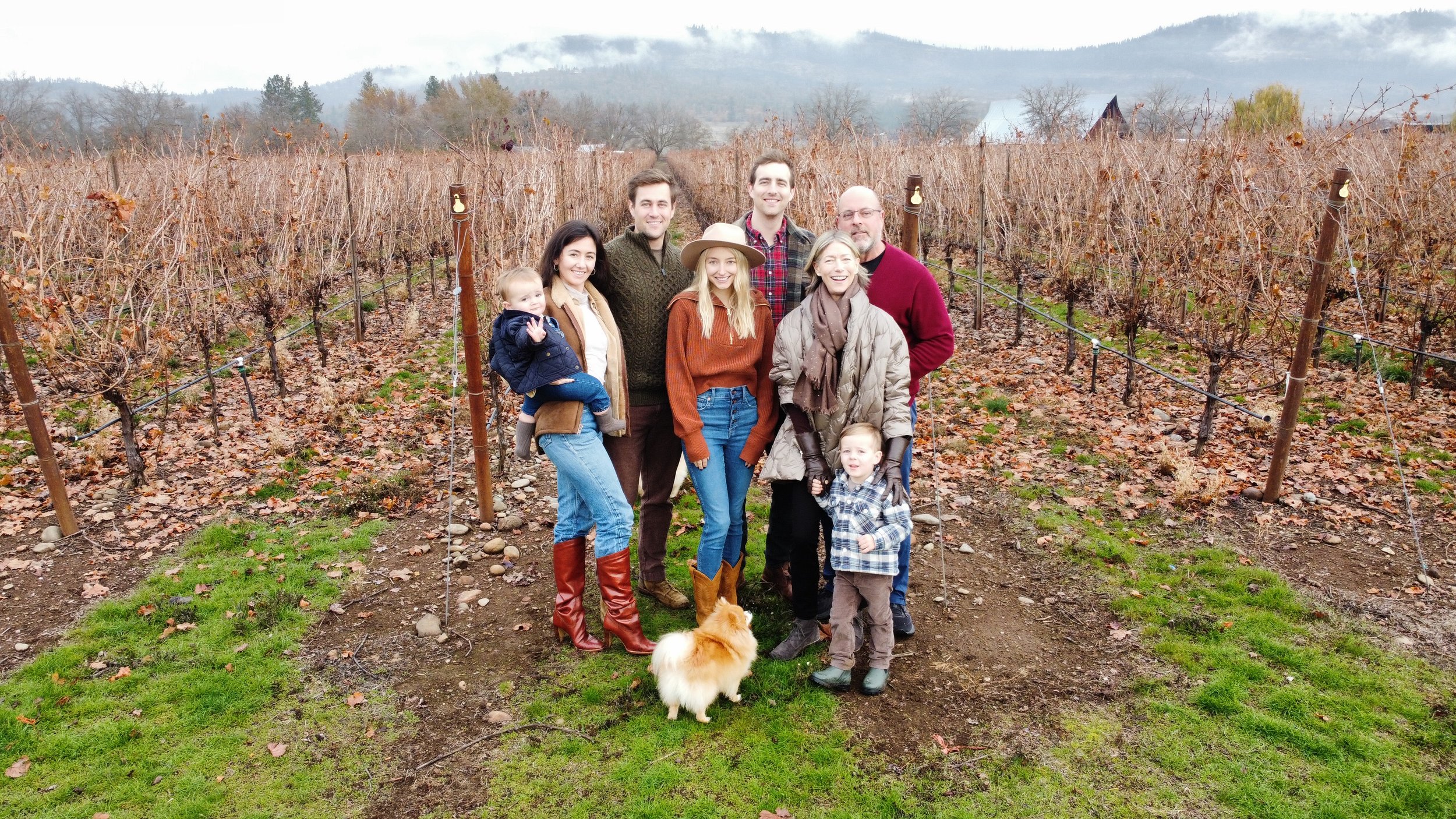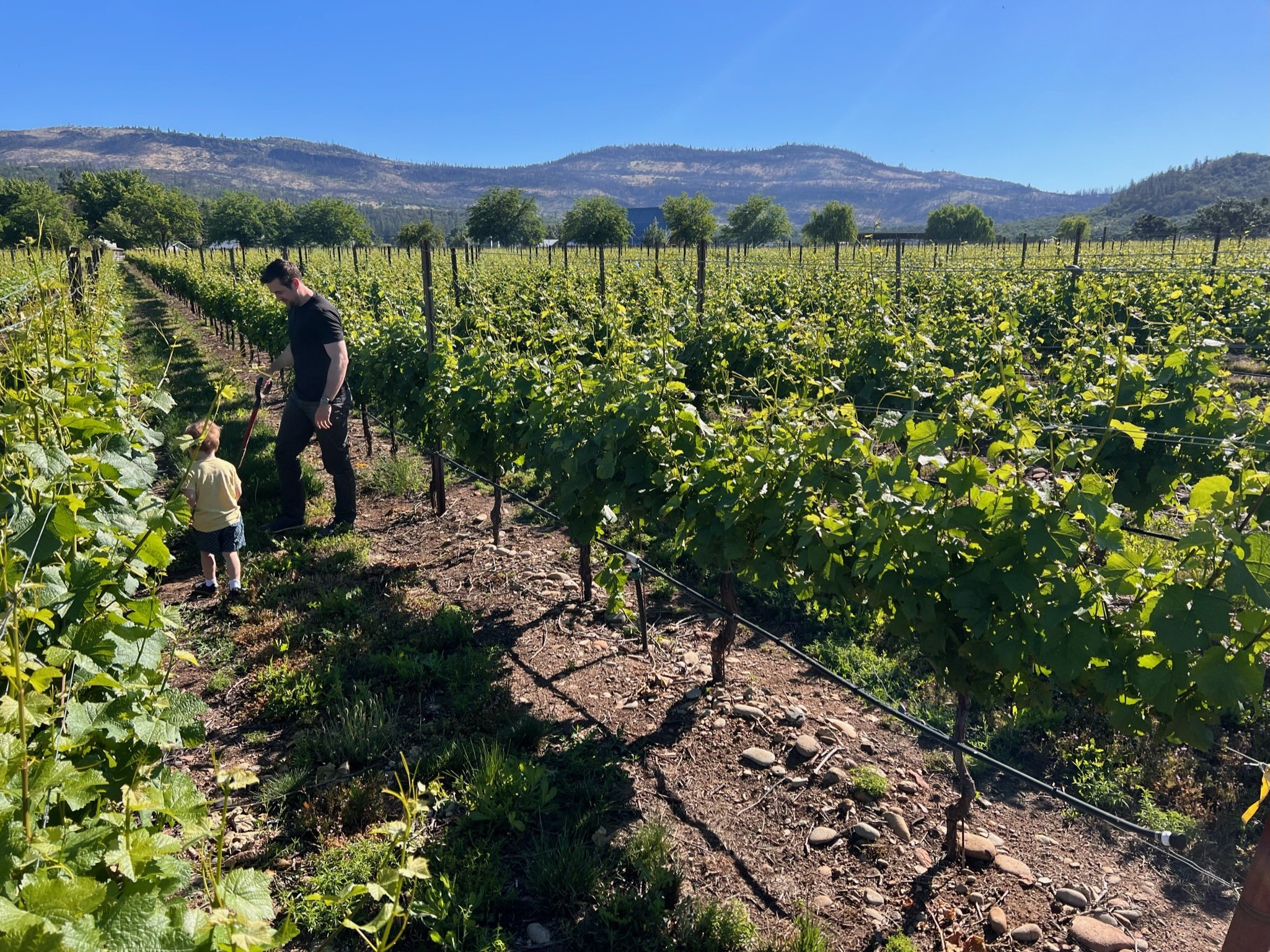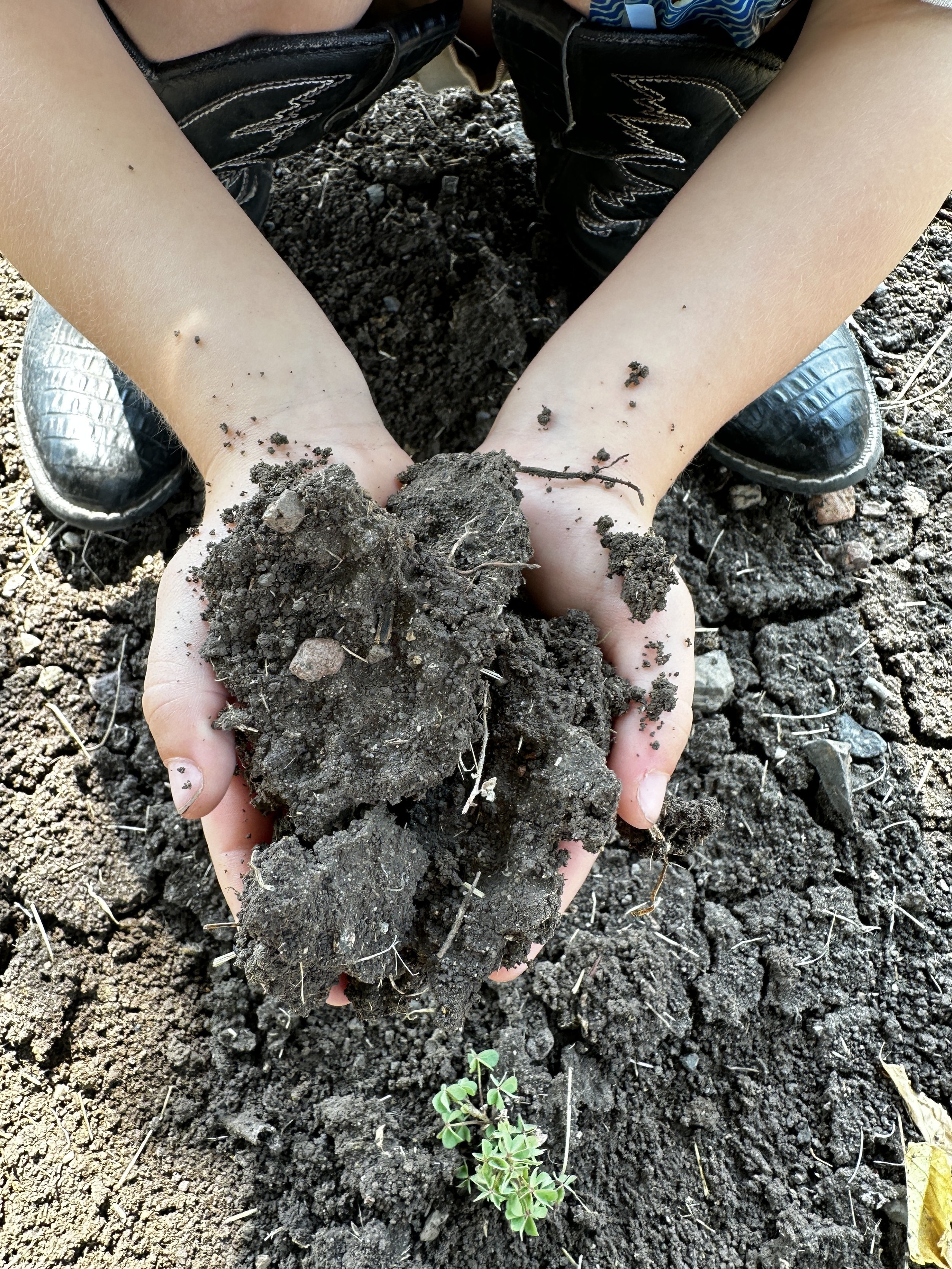
— OUR STORY —
ESTABLISHED 1985
The St. Laurent family journey into agriculture began in 1985 when we arrived in the Rogue Valley, in Southern Oregon and established St. Laurent Land and Cattle.
Since 1985, St. Laurent Land and Cattle has been driven by a mission to produce the very best that we can. We have a commitment to sustainability and a profound respect for the land and the animals that we raise. When we first began, we were one of the first ranches to produce 100% natural beef without the use of growth hormones or antibiotics. Today, our beautiful American Kobe cattle, bred by crossing 100% Wagyu bulls with American Angus cows, becomes some of the finest steak in the world at Snake River Farms in Idaho.
The same adventurous spirit that inspired the family to come west motivated us to create Domaine St. Laurent: a winery and vineyard committed to producing delicious Pinot Noir in a classic French style.
We planted our first vines in 2017 with 14 acres of pinot noir Pommard clones and then added 11 more acres of pinot noir in 2019. Also in 2019, with a few harvests under our belt, we decided to begin our own winemaking adventure with our first release: the 2019 Pinot Noir, Block I.
Now, the third generation of the family is involved in the family business, with Alex and his wife Heidi taking over management of grape production and wine sales. The pair, coming from business and high-end retail backgrounds, have added a spark of youth and fresh ideas to the operation. In the coming years, the vineyard will grow to 250 acres and beyond and will include new varietals like Chardonnay, Viognier and Syrah.

ABOUT OUR VINEYARD
In The Rogue Valley AVA
The Rogue Valley is a sun-drenched, fertile playground for outdoor adventures, fine dining, world-renowned theater and music, and more. Comprised of three distinct valleys with progressively warmer micro-climates, the region successfully grows both cool- and warm-climate varieties so you can enjoy Rogue Valley wine with everything.
The property resides at the foothills of the mountains to the north and east that locally rise to just over 3000 ft. Elevations across the property average approximately 1575 ft, ranging from roughly 1450 to 1750 ft. The property has wide range of slopes from flat over many sections in the central and southwest sections to over 60% slopes the upland zones. As a result of the undulating landscape, the property has a full range of aspects (slope exposure).
Block I has an average elevation of 1625 ft and range of 30 ft across its ~14 acre extent (1610-1640 ft). The slopes are relatively gradual, averaging ~4% with some flat zones and some zones up to ~11%. Block I has an average aspect of 155° or SSE, but with the flatter areas having no dominant exposure direction.
Block II has an average elevation of 1575 ft, but ranges 125 ft over its ~10 acre extent (1525-1650 ft). Due to the greater relief, Block II is steeper than Block I, averaging ~17% with an estimated range of 6-28% depending on the exact block limits. Block II has an average aspect of 225° or SSW, ranging from 170° to 270° (S to W).
Vineyard Climate
Annual Precipitation: 18.5-25.5 inches
Growing Season Average Temperature: 62-64°F
Growing Degree Days: 250-270
Frost-Free Growing Season Length: 145-159 days
Average Maximum Temperature: 88.5°F (July)
Average Minimum Temperature: 28°F (January)
Agate-Winlo soil complex is the predominant soil type in the 25 acres of Block I and Block II:
The Agate series consists of moderately deep to a duripan, well drained soils that formed in stratified alluvium. Agate soils are the mound area of patterned ground on fan terraces and have slopes of 0 to 15 percent.
- Light olive brown in color. Dry, indurated, nearly continuous cemented silica laminae on surface and on vertical surfaces. 40-55% gravel; 10-20% cobbles. Neutral 6.6pH.
The Winlo series consist of shallow to pan somewhat poorly drained soils that formed in alluvium. They are on fan terraces and have slopes of 0 to 3 percent. They are the intermound soil on a pattern ground landscape.
- Light olive brown in color. Extremely gravelly coarse sandy loam; dry, slightly hard, very friable, nonsticky and nonplastic; 40-55% gravel; 10-20% cobbles. Neutral 6.6pH.



















